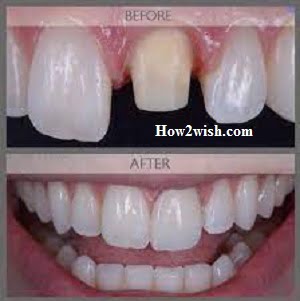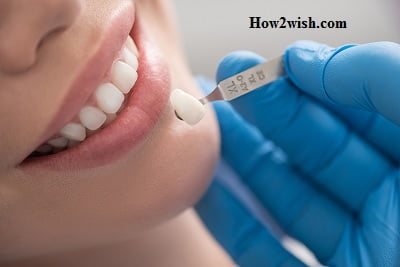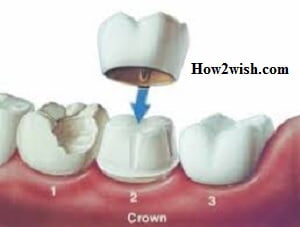Restoring the integrity, functionality, and aesthetics of the jaw region is a task that can be solved using dental techniques. The need for a prosthesis can arise at any age. The causes of damage to enamel and tissues are also diverse – both external and internal factors affect the condition, from pathological processes to natural age-related changes. One of the options proposed as a solution to the problem is the manufacture of a replacement structure that repeats the original anatomical structure of the damaged element and creates the appearance of a complete row. What is it – crowns for teeth, what types of materials are used in modern dentistry, and what is the best way to make dentures for dentition? Let’s figure it out.

General view
From a technical point of view, prosthetics is a procedure whose goal is to replace a missing incisor, canine, or chewing unit with an artificial analog. The use of products belonging to the category under consideration is relevant in situations where the base of the element has undergone significant destruction – more than 50% of the total area of the outer surface. If the diagnostic results show that the remaining part remains viable, has not been revitalized, and does not have pathological foci in the internal structure, a prosthesis can be placed that covers the tooth from negative external factors.
Crowns for teeth Installation pros
Specialists of Dentika dental centers, who have extensive practical experience in prosthetics, note a number of positive aspects characteristic of this technique:
- Possibility to preserve the unit’s health in case of partial destruction.
- Restoration of chewing function and aesthetics of a smile.
- Correct distribution of the load on the bone tissue.
- Elimination of speech defects and prevention of pathologies of the oral cavity.
- Ease of replacement in case of damage.
The final choice of the method of restoration of the dentition depends on the indications of the clinical picture obtained from the results of the preliminary examination. At the same time, it is important to take into account that the technology has not only advantages but also disadvantages that can affect the final decision.
Installation cons for crowns for teeth
Prosthetics is associated with the following inconveniences and side effects:
- Part of the healthy tooth tissue is also subject to grinding, which is necessary for a tight fit.
- The service life of products is less than that of implants.
- The limitation of the procedure is damage to the root.
- The condition of the prosthesis should be regularly checked in the clinical setting.
Nevertheless, the technique under consideration remains in demand, largely due to the affordable cost of treatment, as well as the ability to do without radical surgical intervention.
Indications for the installation of crowns for teeth
The following characteristics of the clinical picture are among the factors that determine the expediency of restoration by the considered method:
- Significant destruction of the outer part of the element.
- No possibility of restoration in any other way.
- The presence of cracks and chips in the structure of the enamel coating.
- diagnosed fracture.
- The abnormal intensity of enamel wears under load.
Replacement dentures are also used as a temporary solution that preserves aesthetics in preparation for implantation. During the engraftment period of the integrated artificial pin, an element removed from the bite is placed on it, which is not subjected to load during the meal.

Contraindications for installation of crowns for teeth
The list of restrictions that temporarily or completely exclude the setting of a crown includes the following factors:
- An advanced form of periodontitis, characterized by weakening of the jaw tissue.
- The insufficient thickness of the enamel coating is characterized by a fragile structure.
- Diagnosed bruxism is a pathological involuntary contraction of the jaws caused by muscle hypertonicity or diseases of the TMJ.
- The small volume of the preserved base does not allow for fixing the prosthesis.
- Abnormal occlusion development, expressed by deep incisal overlap.
You should also take into account individual susceptibility to the components that make up the base and coating of the overlays – in some cases, an allergic reaction or inflammatory processes may develop. An in-depth examination, which provides for the study of anamnesis, as well as the delivery of a number of tests and samples, allows excluding such a possibility.
Types of crowns for teeth
The development of technologies used to process and form materials has significantly expanded the range of options available to dentists. By contacting the specialists of Dentika clinics, you can choose the option that is suitable both in terms of functional and aesthetic characteristics and in terms of the allocated budget for prosthetics. Consider the main options.
Plastic
Polymers, as well as composite compositions, are mainly used to create temporary replacement structures. The positive aspect is the affordable cost, however, it should be borne in mind that the service life of such products is at best 12-18 months, subject to a minimum load, as well as the exclusion of foods and drinks with aggressive pigments from the diet. Plastic is vulnerable to dyes and mechanical stress, therefore, prostheses of this category are often removed from the occlusion, limiting themselves to performing a predominantly aesthetic function.
Metal
The advantages of using metal are obvious – such products are strong and durable, resistant to pigmentation and physical impact, and do not require large-scale tooth grinding. However, the appearance of the dental crown also plays a role here. This option is more suitable for restoring chewing units located deep in a row and invisible to others.
Ceramic
But ceramics, like synthetic materials, is considered the best option for prosthetics of the frontal incisors. Less load falls on this area, and the appearance of the product is almost indistinguishable from natural enamel. The absence of an internal metal frame reduces strength and stability, but this is not critical for the front segment. In addition, the composition is distinguished by the absence of components that can provoke allergies or rejection – biological compatibility increases the service life and guarantees the preservation of the patient’s health.
Zirconia
Speaking about the types of crowns for teeth, and the advantages, and disadvantages that new-generation materials have, most experts agree that zirconia prostheses are the best option available today. The products are available in two versions: combined combinations with a ceramic coating, as well as full-bodied models made from clean blanks. Aesthetics and durability meet the highest requirements and standards, however, the cost of such models is significantly higher than that of analogs.
Metal-ceramic
One of the most common types of artificial crowns for teeth combines the strength of a metal base and the visual appeal of an outer layer made of ceramic. This solution allows you to reduce the cost of production and at the same time achieve excellent results. They are used both as independent replacement structures and as part of bridge prostheses that cover several areas of dementia at once. Among the disadvantages is the potential exposure of an unaesthetic base with a partial loss of gum tissue, which requires additional correction.
Glass-ceramic
Lithium disilicate is a unique material with full biocompatibility, from which spectacular and durable products are created, the service life of which without loss of appearance exceeds ten years. The choice in favor of such crowns for teeth is associated with considerable financial costs, but it allows you to forget about the need to visit dentistry for a long time – at least on issues related to the restored element.

Metal-plastic
A variant from the “cheap and cheerful” series is a combination of a metal base (an alloy of nickel, chromium, and cobalt) and a polymer outer layer. It is quite attractive, and affordable and has a gentle effect on the antagonist’s teeth during occlusal closure. At the same time, it is worth noting that the coating quickly loses its original whiteness, becomes dull, and, under excessive loads, deforms, exposing the metal base. In addition, prolonged wearing of the structure can ultimately cause the development of allergies.
Restoration of anterior teeth
The importance of the frontal incisors, canines, and first premolars, located in the smile zone and visible to others, is determined by their influence on the perception of a person’s appearance. The key criteria are aesthetics, naturalness, and matching of the selected tone with a shade of natural enamel. Recommended options include E.max pressed ceramic, zirconia, and glass-ceramic models. Rarely – subject to financial constraints – cermets are used.
Recovery of chewing units
Prosthetics of molars, premolars, and “eights”, which are subject to the main mechanical load associated with food processing, are primarily characterized by increased requirements for the strength and reliability of structures. In this case, all-metal and ceramic products, as well as combined modifications, which meet the requirements and are affordable, will be the best solution. The choice in favor of zirconium crowns for teeth is justified if there is enough money.
Installation algorithm
The protocol implemented during the restoration of the destroyed element of the dentition provides for the consistent implementation of standard procedures.
Inspection
The initial stage is a preparatory stage that helps to determine the current state of the problem area, identify the presence of hidden pathologies and contraindications, as well as clarify the type, size, and shape of the future replacement structure. The preliminary examination includes:
- Visualization and study of anamnesis.
- Hardware diagnostics using CT or X-ray.
- Delivery of additional tests.
- Modeling a digital version of the planned result.
Treatment of crowns for teeth
Caries, areas of inflammation, chronic diseases – all this requires medical intervention, which should be carried out before the start of prosthetics. Otherwise, there is a risk of aggravating health problems, losing a damaged tooth, and also provoking new pathologies. Appointed procedures are usually not included in the total cost and are paid separately.
Trimming
The absence of limiting factors is a reason to move on to preparing the future foundation. Not only tissues that have undergone necrotic changes are subject to preparation, but also the healthy part of the tooth since the doctor must give it the proper shape for installation. Grinding of pulpless units is by default a painless procedure, however, if desired, the use of local anesthesia is allowed.
Impression-taking and model making
A plaster impression, reflecting the features of the anatomical structure of the jaw row, serves as the basis for modeling the future prosthesis. The primary material is used to create a wax prototype, which, in turn, is used to form an artificial crown.
Fixation
Before installing the structure on the prepared stump, it is necessary to carry out pre-treatment and fitting. If the patient does not experience discomfort associated with an incorrect choice of size, the product is fixed using dental cement with increased adhesion. The strength and tightness of the landing are subject to mandatory verification since a violation of the protocol can result in negative consequences.

Possible Complications crowns for teeth
The cause of problems that arise after prosthetics can be both incorrect treatment and a reaction to the selected material. If consultation with the doctor who performed the restoration is temporarily impossible, it is recommended to clarify what the crown for teeth consists of before contacting – this means that the new dentist will have to spend less time making a diagnosis, and he will be able to quickly find a solution to the problem.
Painful sensations
The development of pathological and inflammatory processes, incorrectly determined dimensions of the prosthesis, and foreign elements entering the gap between the base and the overlay are all factors that can cause pain. If the pain persists for several days or reaches the acute phase, you should immediately visit the clinic and undergo an examination.
Zirconium Crowns Teeth: Advantages and Disadvantages
Bad smell
Symptoms characteristic of the development of infectious diseases, accompanied by the formation of a purulent mass. The absence of timely intervention leads to serious complications.
Allergic reactions
Prolonged contact with soft tissues and artificial materials can provoke an allergy, the signs of which are a rash, itching, burning, swelling, and other characteristic manifestations, up to a galvanic syndrome. In this case, it is highly likely that the installed prosthesis will have to be replaced with a new one that does not contain similar components.
Development of caries
Removal of affected tissues does not always mean complete relief of the carious focus. Pathology can hide in the root structure and go unnoticed due to insufficiently thorough diagnosis. Treatment depends on the degree of development – in the later stages, it may be necessary to remove the remains of a living tooth, after which an artificial crown is unnecessary.
Prosthetic stomatitis
Pathology, which is more typical for owners of removable dentures, can also manifest itself when a permanent replacement structure is installed. The main factors are insufficient oral hygiene, as well as poor-quality processing of a product that leaves wounds on the gums or the inside of the cheeks.
Care after prosthetics
Strict adherence to medical prescriptions avoids most of these problems. The list of recommendations is announced after the installation of the prosthetic element and depends on the specific clinical situation.
How much does restoration cost?
The last thing to deal with is the question of price. In the clinics of the Dentika network, the costs primarily depend on the material of manufacture:
Technology Cost, rub.
Ceramics E-Max 29 500
Zirconia CAD/CAM 31 000
Metal-ceramic restoration 15 000
Microprostheses LAVA Ultimate 31 000
So, now you know about the advantages and disadvantages and how they look, and what types of crowns for teeth, photos of which are presented on most thematic sites.